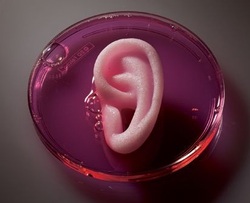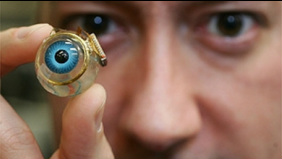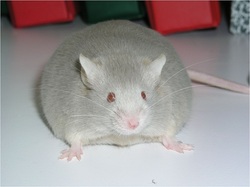Research & Developments
Check back often! We’re always updating with more research news and medical breakthroughs. It is an exciting time for research and technology; we are learning and gaining ground at speeds never before imagined. What was once thought of as science fiction is now reality!
The Glove Experiment - Vibrating Glove Teaches Braille at Lightning Speed
Scientists at Georgia Tech stitched tiny vibrating motors into the knuckles of each finger in the gloves. When one of the motors vibrates, the wearer presses a corresponding key and the system tells them which letter they are typing. The gloves were tested on people who had never learned Braille before.
After an initial lesson, participants were distracted for 30 minutes by playing a game while half of the participants’ gloves kept buzzing so they kept learning passively. This technique is called passive haptic learning (PHL).
People wearing the gloves that kept buzzing made 30 per cent less errors than those who did not benefit from the passive haptic training. They could read 70 per cent of a Braille phrase when tested, compared those whose training stopped during the game, who could only read 22 per cent.
Lab-Grown Organs, Custom Made for YOU!
What if you could grow a custom-made organ in a lab? It sounds like science fiction, but people are now benefiting from just that sort of technology.
Two years ago, Angela Irizarry of Lewisburg, Pa., needed a crucial blood vessel. Researchers grew her one in a laboratory, using cells from her own bone marrow. Today the 5-year-old sings, dances, and dreams of becoming a firefighter — and a doctor.

Growing lungs and other organs for transplant is still in the future, but scientists are working toward that goal. In several labs across the country, scientists are studying how to grow organs from a patient’s own cells to create custom-made implants.
Here’s the dream scenario: A patient donates cells, either from a biopsy or a simple blood draw. A lab uses those cells and “seeds” them onto a scaffold that’s shaped like the organ that patient needs. Then, says Dr. Harald Ott of Massachusetts General Hospital, “we can regenerate an organ that will not be rejected (and can be) grown on demand and transplanted surgically, similar to a donor organ.”
Bionic Eyes - Fact or Fiction?
 New FDA-approved advancements in retinal implants lead
New FDA-approved advancements in retinal implants lead
to vision for blind individuals by utilizing special glasses outfitted with miniature cameras. With further advancements and research already underway, there may be limitless potential!
Human Mice?
How can a single gene affect multiple systems throughout the body?
That’s a question researchers are asking about the ALMS1 gene (aka the Alström gene). The exact function of the ALMS1 gene remains unknown, but researchers are learning more every day by studying mice. That’s right, mice.
As different as they appear, humans and mice are surprisingly similar under the hood. We share more than 95 percent of our genomes and get most of the same diseases, for many of the same genetic reasons. Therefore, experimental findings in mice often correlate to human biology.
In other words, a mouse model with a specific disease provides a research “stand-in” for a human patient. Scientists are able to conduct experiments in mice with specific diseases that would be impossible in humans.
At The Jackson Laboratory in Bar Harbor, Maine, where Alström Syndrome International researches the disease, scientists created an Alström Syndrome mouse through genetic engineering. The mouse (nicknamed Carl Henry after the doctor who discovered the Syndrome; Dr. Carl Henry Alström) allows researchers to study the mysterious workings of the disease and, hopefully, find therapies for treatment, and one day a cure.
Did you know?
Social Security Administration Recognizes Alström Syndrome
The Social Security Administration has included Alström Syndrome in their compassionate Allowances Initiative. This initiative speeds up the processing of disability claims for applicants with certain medical conditions that cause severe disability.
Research from Rare Diseases Can Lead to Treatments for Millions
There is a very rare disease called Tangier Disease, which was first discovered when a small group of people developed orange tonsils. When doctors investigated, they found that these people had a mutation in a gene that affects how the body processes cholesterol. Their tonsils were building up huge amounts of cholesterol, which was causing them to turn orange. Tangier Disease is incredibly rare – only a few hundred people in the world are diagnosed with it. And yet by studying the gene that is mutated, scientists are developing treatments for heart disease, which affects millions of people.
Tangier Disease is incredibly rare – only a few hundred people in the world are diagnosed with it. And yet by studying the gene that is mutated, scientists are developing treatments for heart disease, which affects millions of people.
Because our biology is extremely complex, oftentimes treatments for common diseases come from very unexpected places.
